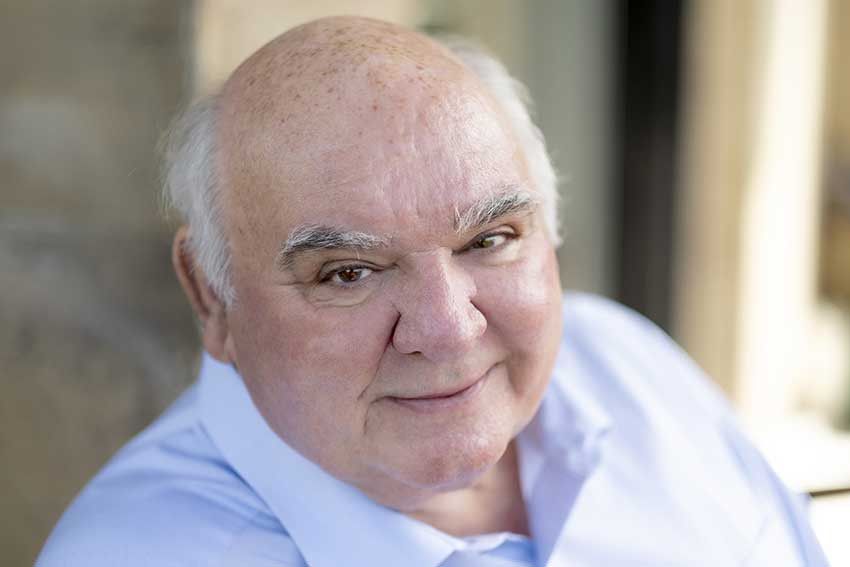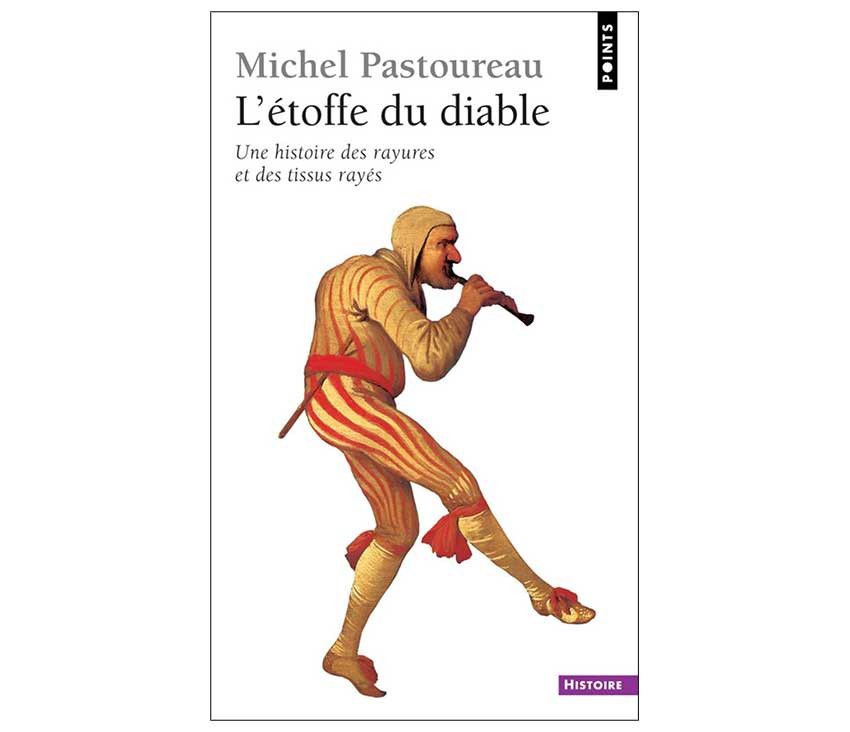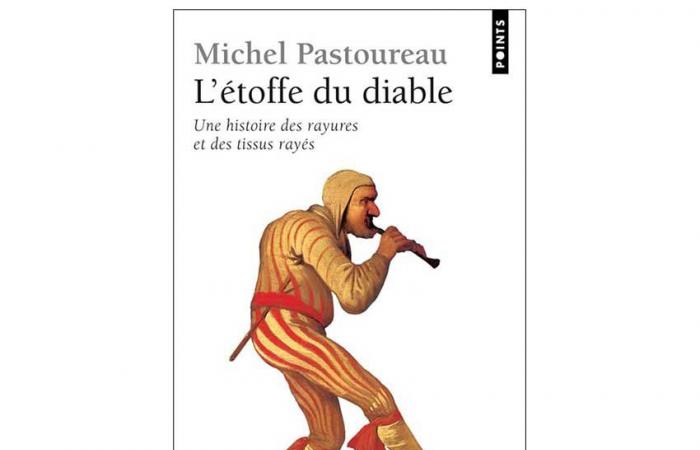Specialist in colors, images, emblems and animals, former director of studies at the Practical School of Advanced Studies, Michel Pastoureau is the author of around sixty works, among which The fabric of the devil, a story of stripes and striped fabrics (1991), Blue: story of a color (2000) or more recently the crow. A cultural history (2021). He has just published a new work by Éditions du Seuil, The imagination is a realityin which he evokes the origins and springs of his creativity, his fascination for colors and his next subjects of study.
When was your taste for museums and exhibitions born?
I was one of those children that we took very early in museums where my parents, and also my uncle and aunt, used to go to see exhibitions. I got a taste for it very quickly.

Michel Pastoureau © Photo: Bénédicte Roscot
And your passion for the Middle Ages?
She appeared following the screening of a film, Ivanhoé From Richard Thorpe, whom I saw while I was on vacation in Brittany. I was eight years old. The film was screened in the cinema of a small village on the north coast that a comrade’s grandmother held. He and I played the role of “openers” during intermission. We saw this film dating from 1952 six days in a row, due to rainy weather conditions that year. Ivanhoé fascinated me. So I decided to drop the cowboys for the knights. My passion for the Middle Ages has not spoken since.
Medieval symbolism (Part1) – Conference by Michel Pastoureau
Your pronounced interest in colors too, in early childhood?
Most children love colors. But, with me, it continued, no doubt because I used to see paintings. Several friends of my father were painters. Their workshops were my playgrounds. We saw bundles with floated pigments. I also frequented my mother’s pharmacist who was a pharmacist, where there was also a classification of colors that were used to classify drugs depending on whether they are calming or exciting.
What fascinates you so much in the history of colors?
The theme of colors always interested me because it touches many fields of knowledge and concerns us all. In addition, the documents are numerous and accessible. So we have something to work, even for older eras. I like to cross information, work both on texts, images, archeology, and also on language and lexical aspects. The color lends itself very well to this type of research. At the university, however, I had some difficulties when I wanted to make colors my research subject. This did not interest anyone in history, and even less in art history.

Michel Pastoureau and Laurent Lemire, the imaginary is a reality, 208 pp., € 19.50, threshold
How do you explain the disinterest of historians and art historians towards these subjects?
It is a heritage that dates back to the end of the Middle Ages and the Renaissance. And who has still not completely disappeared Today. In the debates on the question of what is most important in painting – drawing or color – the drawing was always a winner. There has always been the idea that color, which is addressed to the senses and not to the mind, is less important than the line. The idea that she has something unchanged or elusive. And this is even more marked in France, where we are more interested in style, attributions and dates, than in neighboring countries.
Medieval symbolism (Part1) – Conference by Michel Pastoureau
The other reason is due to the habit that historians had, for generations, to work on images and reproductions in black and white. Which led them to forget the problems of color. When I followed my studies at university, the slides that were projected were all in black and white. I am surprised to note that painting historians still arrive today to write several hundred pages on the work of a painter without talking about colors.
How do you explain that colors are defined and understood differently depending on the country and continents?
Everything about color is cultural. The knowledge, sensitivities and perceptions that flourish in Europe are not the same on other continents where there are other parameters, knowledge and traditions relating to colors. The “laws” that affect color are not universal. Multinationals are also very conscious. The color codes they use in their advertising strategies vary depending on whether they are intended for Europe, Japan or African countries. We note, moreover, that knowledge relating to color chemistry are not shared on all continents.
-When the red, which has experienced a form of primacy in history, has been dethroned by blue, become the favorite color of our contemporaries? And why?
The most important rupture operated during the Protestant reform. It mainly concerns daily life and especially clothes. For reformers, in the 16th century, the colors too showy were considered unworthy of good Christians. They therefore had to be avoided. Red, yellow and green, frequently used in clothing, experienced a clear decline from that time. The Catholic counter-reform has taken over the values of its Protestant counterpart. Our color codes are still dictated by the weight of this ancient story. It is very rare to observe, in the metro for example, people dressed in yellow. We see a little red and a little green. But the vast majority of our contemporaries bears black, dark gray and navy blue. These codes relate to another, old and well anchored conviction, which wants to stand out constitutes, in a way, violence against others.
Blue has therefore become the favorite color in the West …
This is the case, in fact, since there are opinion surveys. For 150 years, the results have always been the same. Blue crushes everything in Europe from Portugal to Ireland and Poland. One in two people say prefer blue, in front of the green which is positioned far behind. Follow black, red, white and yellow. The results are the same for men and women. The Italians show an astonishing form of veneration for blue.
What are the preferences of Asian?
Studies, conducted in Japan, show that, in this country, the favorite color is white, in front of red and black. In fourth position comes pink. In China, it is red that is the favorite color, in front of yellow. Blue is very poorly placed. It’s about the same in India.

View of the exhibition The color speaks all languages. Selected works from the Al Thani © the Al Thani Collection 2024. All Rights Reserved. Photography by Marc Domage.
And in Africa?
In North Africa and Egypt in particular, in countries where Islam is state religion, green is often the color cited first in opinion surveys. In South Africa which is a fairly Westernized country, we find, more or less, the preferences that are those of Europeans. In black Africa, on the other hand, the investigators who move with nuancers, designed by Westerners, realize that their questions do not speak to these populations at all. These are more attached to the materiality of the color and want to know if the color is dry or humid, smooth or rough, tender or hard. It is more important for them than to determine whether their favorite colors are green, red or blue.
“Yellow. History of a color”, Michel Pastoureau – Editions du Seuil
Why do people working in the art world-architects, exhibition commissioners, conservatives and people in the fashion sector especially-do they often dress in black?
The choice of black is first linked to elegance and seriously associated with this color. This relatively neutral color also allows creators to better highlight the other colors they use in their work.
You write in your latest book, the imagination is a reality, that “the more the tools of knowledge perfection, the more the thought retreats”. What do you mean by that?
The teacher I have had every time to observe a decline in the spirit of synthesis. The flow of information available results in knowledge of knowledge. The specialization means that it is more difficult today, to students to assert a synthetic thought and to identify-ideas. IT is probably there for many. It led to the adoption of a binary thought which generates an erasure of the nuances which leads to a very regrettable weakening of thought.
What were your greatest publishing and broadcasting successes?
Devil’s fabricwhich tells the story of striped stripes and fabrics, published in 1991, is my most translated work. It was in 42 languages. Regarding consumer books, it is Blue. A color story who sold best. Published for the first time in 2000, he continued to flow today.

Michel Pastoureau, the devil’s fabric, a story of stripes and striped fabrics, 2003, threshold
What subjects do you plan to work in the coming years on?
I would like to continue my series on the colors by attaching myself to purple, and also to the gray for which I have a pronounced taste. As for my more learned research, I would like to work on the notion of colorless which concerns in particular the field of painting. When a painter is led to express, in a color table, the idea of the colorless, what choice will he make? This was not the same according to the eras. In old societies, naked support was used to appear the colorless. Later, we will go to white. Today, the colorless is rather associated with the monochrome.












